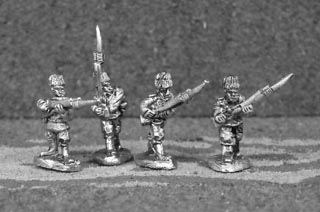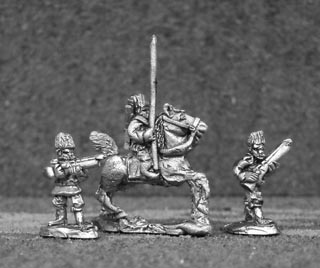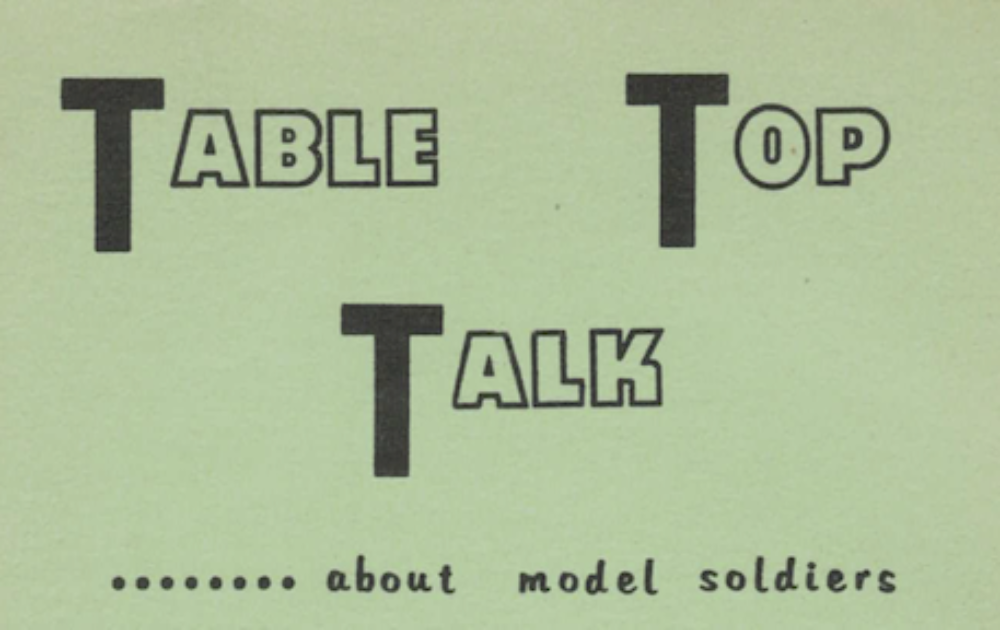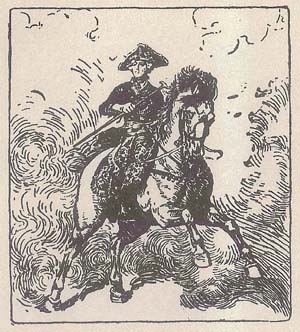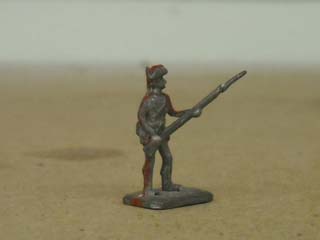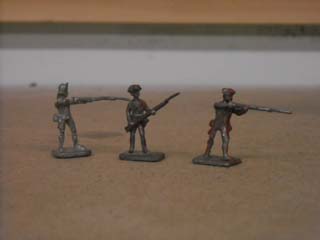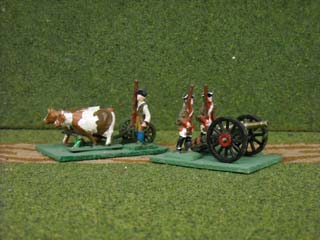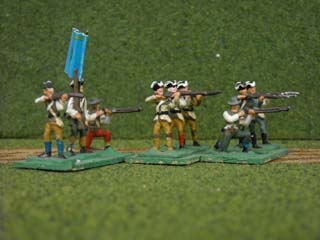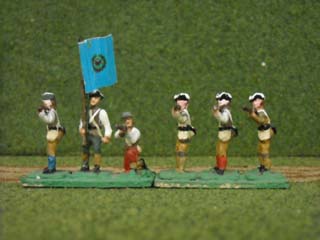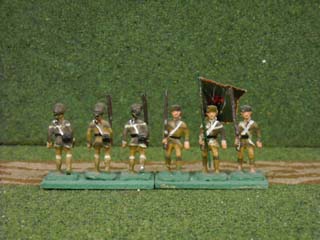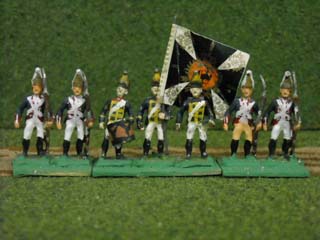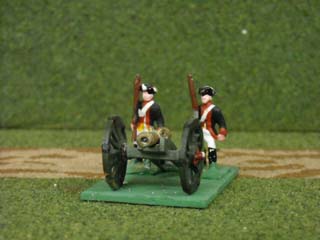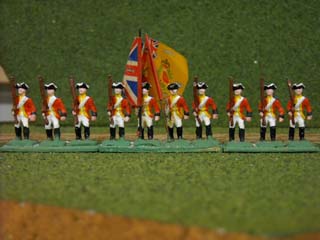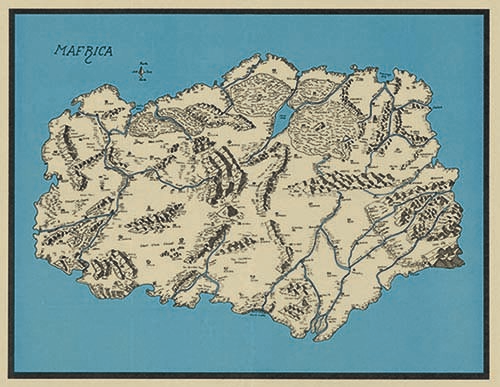I started on this post way back in March. This was about the same time as I started painting Civil War armies (in 54mm) for Liam. Somehow, I totally misplaced my scans and notes until late last week when I was working on some other rules project…
While Liam and I are having fun designing our own rules for Medieval & Fantasy I thought that playing with some true old school rules would be fun for American Civil War games. During one of my re-readings of the old Scruby publications I happened upon the March 1959 issue of War Game Digest. This issue focused on Musket Era war games and contains an article titled ‘The Civil War in Miniature‘ by Larry Brom. Larry’s organization fit perfectly with what I was looking for in an old school war game. I don’t expect Liam’s 54mm armies to be as large as Larry’s 30mm forces, but we should still have some fun with these rules. As soon as things slow down around here we hope to use my 40mm armies and give these rules a try while I’m working on painting the 54mm figures (If I’m lucky Liam’s first ACW units will be ready in time for Christmas).
Look for the next installment of our Classic 20mm series by the end of the week. In the meantime why not settle in and enjoy Larry Brom’s rules from 1959…
THE CIVIL WAR IN MINIATURE
By
Larry V. Brom
I shall endeavor to present in outline form my system and theories on the American Civil War in miniature with the hope that some small bit of information will be of use to one of you in your future war game projects. In this small way I might possibly be able to repay those dozens of worthy contributors to War Game Digest who have so inspired and enlightened me in the able art of table top combat.
Equipment
A) I have a 4ft by 8ft hard top table with movable paper mache’ hills and mountains, sponge trees and card board houses.
B) I have the usual range and movement sticks, dice and firing charts.
C) I use 1 inch by 2 inch blank cards for hidden troop movement on the field.
D) I use a 635 man 30mm SAE and Scruby army to fight with.
Organization
A) Ten men (1 officer included) equal a regiment
B) Three regiments and one Brigadier equal a Brigade (31 men)
C) Two Brigades and one Major General equal a Division (63 men)
D) Two Divisions and one Lt. General-equal a Corps (127 men)
E) Each Army has two infantry corps, a brigade of cavalry (32 men), four cannons with twenty artillerymen and a five man HQ group.
F) Each regiment has a flag designed with a number, state, and colors corresponding to the colors of the blanket rolls of that Regiment for easy identification on the field.
G) I have the usual picturesque units that appear on miniature Civil 1:’lar battleground s, such as: Louisiana Tigers, Hawkins Zouaves, Duryeas Zouaves, Berdans Sharpshooters, First Virginia Cavalry, Rockbridge Artillery and such.
Pre-Game Preparation
A) To prevent each opponent from knowing exactly what hers up against, I use a Point System to determine the composition of each force that takes the field in each battle. It works like this: Each infantryman is worth 1 point; each Sharpshooter is worth 2 points; each Cavalryman is worth 3 points; and each gun and crew is worth 10 points.
You then decide that you will have, say, a 150 point battle. Each player then builds up a 150 point army using any combination of forces according to their point value (see example armies below).
| Army “A” |
Army “B” |
| 80 infantrymen |
80 points |
50 Infantrymen |
50 Points |
| 10 cavalry |
30 points |
30 Cavalrymen |
90 points |
| 10 sharpshooters |
20 points |
1 gun and crew |
10 points |
| 2 guns and crews |
20 points |
|
|
| TOTAL |
150 points |
TOTAL |
150 points |
B) I always mask off the field with a curtain before setting up the forces to compensate for “pre- battle maneuver”.
C) I use a “card” system in my battles to introduce concealment and hidden troop movement on the field. It works like this: Each opponent has available blank cards on which he enters what that card represents on the field. Each card may have from one to thirty men on it, at the player’s discretion. Each side, by pre-game arrangement, limits the number of cards. These cards are then placed faced down in their starting positions on the field. The cards are moved as if they were troops, and of course neither player has any idea of what is actually moving towards him until the opponent’s cards are exposed. (Here is where skirmishers and shaprshooters come in). Cards can only be exposed as follows:
1) At a player’s discretion
2) When hit by rifle fire
3) When hit by artillery fire
Sequence of Play
A) I use the Alternate Move, Simultaneous volley system (the Combination Type War Game)
B) On each turn the player must follow this sequence – move, fire volleys, fire artillery, and then fight out melees.
C) I do not use the Continuous Combat Theory, but do give Bonus Moves to winners of hand to hand combat.
D) Hand to hand combat is fought on an individual basis man to man using dice to determine the winners. Player with-most men remaining in melee area wins
Special Rules
A) Sharpshooters: get extra range and more hitting power, but no extra move distance.
B) Light Infantry: in each game player designates a light infantry brigade, which gets longer moves.
C) Movement depending on Formation; I believe in keeping as much semblance of military formation as possible on the field, and these rules encourage it:
1) Infantry in line, cross country – move 6 inches
2) Infantry column, cross country – move 9 inches
3) Infantry column, on road – move 12 inches
4) Infantry stragglers – move 3 inches
I think this briefly touches on the high points of my Civil War games in miniature. I will close with a little ditty written by Pvt. Ezra J. Pettywick, late of the 5th Texas Infantry Regiment, CSA:
The Battle is not to them thats got,
The rules so neat and nice,
The battle is to the feller who
Rolls the hottest dice!
